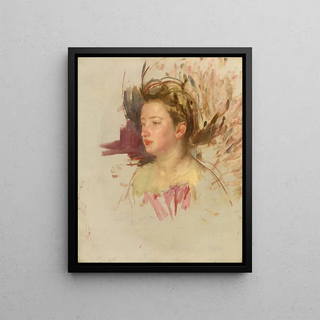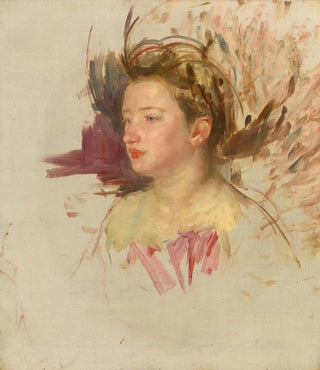Art print | Sketch of Antoinette - Mary Cassatt


View from behind

Frame (optional)
In the world of art, certain works transcend their era to become timeless witnesses of human emotion. "Art print Croquis d'Antoinette - Mary Cassatt" embodies this essence, revealing both the delicacy and depth of female experience at the end of the 19th century. Mary Cassatt, an iconic artist of the Impressionist movement, masterfully captured moments of life with a unique sensitivity, and this sketch is a perfect illustration of that. Gazing at this piece, the viewer is immediately transported into the artist's intimate universe, where each brushstroke seems to whisper a story, a thought, or an emotion.
Style and uniqueness of the work
The charm of "Croquis d'Antoinette" lies in its apparent simplicity, which in reality conceals emotional complexity. Mary Cassatt uses flowing lines and soft colors to create a portrait that evokes both tenderness and melancholy. The way she plays with light and shadow, while maintaining a subtle palette, brings her subject to life. This art print, far from being a mere representation, becomes a dialogue between the artist and her model, an exploration of the nuances of femininity. Antoinette's posture, both serene and reflective, invites contemplation, while the delicate details of her face and hairstyle reveal the meticulous attention Cassatt pays to each element. This unique style, characterized by an intimate and personal approach, makes this work a striking example of Impressionist art.
The artist and her influence
Mary Cassatt, born in 1844, was one of the few women to make a name for herself in the male-dominated art world of her time. Influenced by artists such as Edgar Degas, she developed a style that is uniquely her own, blending realism with Impressionist sensitivity. Cassatt primarily focused on themes of motherhood, childhood, and female relationships, offering a unique perspective on everyday life of women. Her work not only marked her era but continues to inspire many contemporary artists. By highlighting women's experiences,

Matte finish

View from behind

Frame (optional)
In the world of art, certain works transcend their era to become timeless witnesses of human emotion. "Art print Croquis d'Antoinette - Mary Cassatt" embodies this essence, revealing both the delicacy and depth of female experience at the end of the 19th century. Mary Cassatt, an iconic artist of the Impressionist movement, masterfully captured moments of life with a unique sensitivity, and this sketch is a perfect illustration of that. Gazing at this piece, the viewer is immediately transported into the artist's intimate universe, where each brushstroke seems to whisper a story, a thought, or an emotion.
Style and uniqueness of the work
The charm of "Croquis d'Antoinette" lies in its apparent simplicity, which in reality conceals emotional complexity. Mary Cassatt uses flowing lines and soft colors to create a portrait that evokes both tenderness and melancholy. The way she plays with light and shadow, while maintaining a subtle palette, brings her subject to life. This art print, far from being a mere representation, becomes a dialogue between the artist and her model, an exploration of the nuances of femininity. Antoinette's posture, both serene and reflective, invites contemplation, while the delicate details of her face and hairstyle reveal the meticulous attention Cassatt pays to each element. This unique style, characterized by an intimate and personal approach, makes this work a striking example of Impressionist art.
The artist and her influence
Mary Cassatt, born in 1844, was one of the few women to make a name for herself in the male-dominated art world of her time. Influenced by artists such as Edgar Degas, she developed a style that is uniquely her own, blending realism with Impressionist sensitivity. Cassatt primarily focused on themes of motherhood, childhood, and female relationships, offering a unique perspective on everyday life of women. Her work not only marked her era but continues to inspire many contemporary artists. By highlighting women's experiences,






